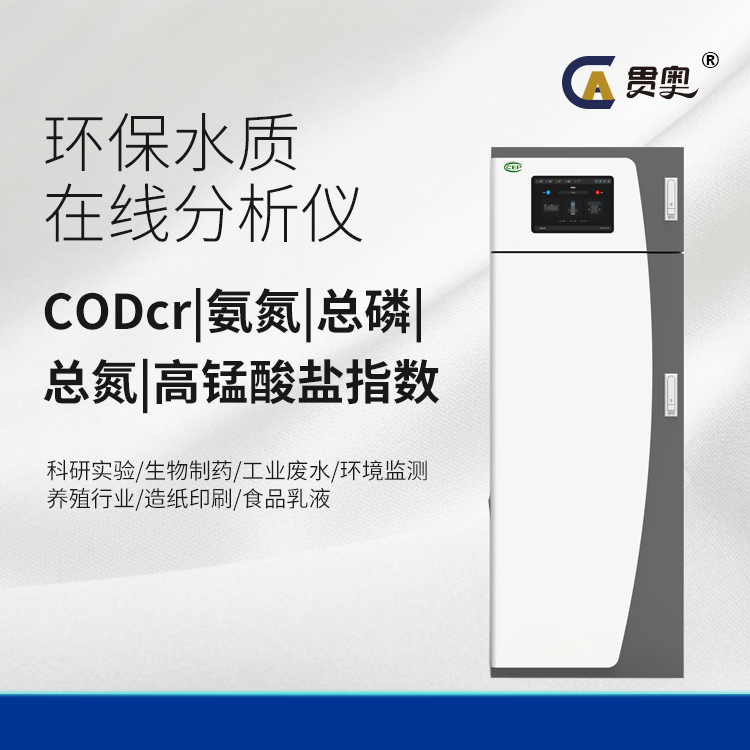The ammonia nitrogen online monitoring instrument is a device used to measure the concentration of ammonia nitrogen in water bodies. By using professional ammonia nitrogen detection equipment and automation technology, the concentration of ammonia nitrogen in water samples can be measured in real-time and continuously, and accurate measurement results can be provided. It is of great significance for evaluating water quality status, guiding environmental protection measures and water resource management decisions. It has a very wide range of applications in fields such as water treatment plants, sewage treatment plants, water source monitoring, agriculture and aquaculture. Additionally, in daily use, attention should be paid to the potential malfunctions that may occur with the ammonia nitrogen online monitoring instrument.

The ammonia nitrogen online monitoring instrument may have the following faults:
1. Sensor failure: The ammonia nitrogen sensor in the monitor may be damaged or malfunctioning. This may be caused by prolonged use, aging, physical damage, or chemical corrosion. Sensor failure can cause the monitor to be unable to accurately measure the concentration of ammonia nitrogen.
2. Power supply issue: When there is a problem with the power supply of the ammonia nitrogen monitor, it may cause the equipment to not operate properly or provide sufficient power to the sensors and other components. Power issues may include power adapter failure or poor wire contact.
3. Data transmission failure: Ammonia nitrogen online monitoring instruments are usually connected to data acquisition systems or remote monitoring systems to transmit measurement data and receive commands. If there are problems with data transmission, it may be caused by network connection interruption, communication protocol errors, hardware failures, or configuration issues.
4. Calibration error: To ensure accuracy, ammonia nitrogen online monitors usually require regular calibration. If there are errors in the calibration program or the calibration coefficients are incorrect, the measurement results of the monitor may deviate.
5. Cleaning issue: The sensors and optical components of the monitor may be contaminated, such as dust, sediment, or chemical residue. These pollutants may affect the sensitivity and accuracy of sensors, so regular cleaning and maintenance are required on a daily basis.
6. Hardware failure: Electronic components, circuit boards, or other hardware components in the monitor may malfunction, such as chip damage, circuit disconnection, or soldering issues. These faults may cause the equipment to malfunction or provide accurate measurement results.
7. Improper maintenance: If the monitor is not properly maintained and maintained, such as lack of cleaning, insufficient calibration frequency, or neglecting routine maintenance procedures, it may malfunction or degrade performance.
8. Software failure: Ammonia nitrogen online monitoring instruments usually have relevant software or firmware for controlling equipment operation and data processing. Software failures may cause the monitor to malfunction, display abnormal data, or malfunction.
9. Electromagnetic interference: In certain environments, such as areas with high electromagnetic radiation or strong electromagnetic interference, the monitor may be affected by electromagnetic interference, resulting in abnormal equipment operation or incorrect measurement results.
10. Water sample supply issue: The monitor usually needs to be connected to the ammonia nitrogen sample supply system to provide water quality samples for testing. If there is a malfunction in the supply system, such as pump damage, pipeline blockage, or supply source interruption, it may cause the monitor to malfunction.
These are common factors that may cause malfunctions or performance issues in ammonia nitrogen online monitors. To ensure the normal operation of the equipment, it is recommended to regularly inspect and maintain the monitor, as well as follow the manufacturer's recommendations and operating guidelines. If a malfunction occurs, it is best to contact the relevant technical support team or manufacturer for further troubleshooting and repair.



